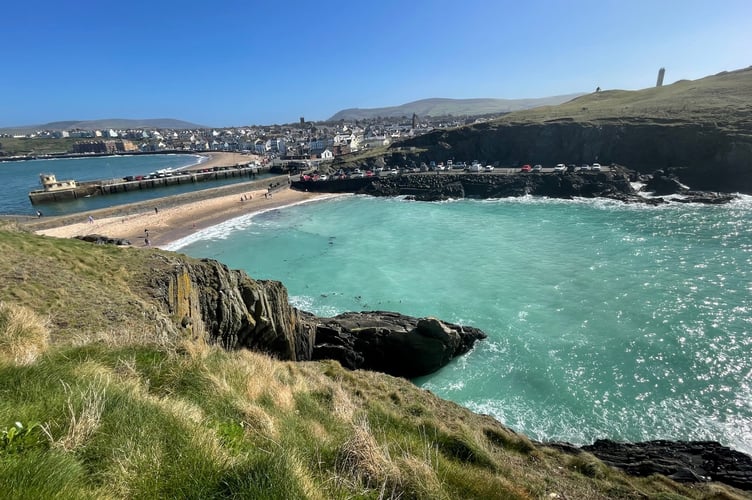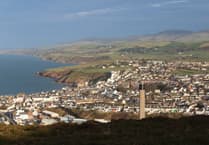There are few beaches as unique as Fenella on the Isle of Man.
But the iconic appearance of this popular cove in Peel looks set to change forever.
Possibly one of the most photographed spots on the island, the beach is entirely manmade thanks to the road connecting the town to Peel Castle.
The spot is instantly recognisable to generations of residents and visitors by the carpet of colourful seashells which blanket the sandy shoreline.
However, that sight could soon be less obvious due to a recent change which will see the appearance of the beach transform over time.

Dr Peter Duncan, a senior marine environment officer within the Fisheries Division of the Department of Environment, Food and Agriculture (DEFA), said: ‘For decades, the shellfish processing factories disposed of their shell and organic waste at the back of Peel Hill (formerly a quarry) via a concrete chute and into the sea below,’ Dr Duncan explained.
‘Over time the shells accumulated on the seabed at the base of the cliff and were actually visible at very low tides.
‘The shells, having a relatively large surface area (and with hydrodynamic adaptations for swimming) were then subject to tide and wave action which tended to move them northwards and round the corner into Fenella Beach where they accumulated.


‘I presume the distance and hydrology meant that they didn’t get as far as Peel Beach.
‘It has struck me that the Fenella shells seem to be mostly the flat valves of scallops, rather than the curved valves, and so I wondered whether the different shell shapes were sorted by the water movements with the flat ones coming onto the beach and the round ones remaining offshore?’
On a sunny day and in certain conditions, Fenella can look almost tropical with a creamy, azure water colour. The dazzling seashells may add to the effect.
But that could soon change with a new practice.

‘For a number of reasons the practice of disposal of shellfish waste directly into the sea at Peel Hill was stopped in early 2024,’ Dr Duncan explained, ‘and the shells will now be crushed to provide calcium carbonate products for use in applications like agricultural soil conditioning.
‘So while not related to the shellfish industry disappearing, which doesn’t seem likely as the scallop fisheries are currently in good state, the change of disposal practice will likely result in Fenella Beach changing to being less-shelly over time.
‘It has also been the case that shell removal from Fenella occurred on a regular basis historically, with the clean shells being taken away and used for agricultural purposes.
‘While an interesting example of incidental consequences shaping our coastal environment, it was not good practice and environmental and commercial considerations have changed to make waste recycling a better option.’

Dr Duncan says that while Fenella may change aesthetically, it will be better news for the environment.
‘The Peel Hill seabed and Fenella beach will gradually return to a more natural state,’ he said, ‘and will undoubtedly support better biodiversity and ecosystem processes, rather than just clean our shells and providing an interesting tourist attraction.’
However, Fenella will still look different compared to our traditional sandy beaches.
‘Shells, and ultimately shell-sand, will still be whiter than rock-derived sand,’ Dr Duncan said, ‘and so those shell pieces will simply get smaller over time, not disappear.
‘So assuming the blue is related to water clarity, shallow depth, sand brightness and reflection from blue skies etc, then it may well stay pretty similar, just that the whole shells will likely disappear in the medium term.’


.jpeg?width=209&height=140&crop=209:145,smart&quality=75)

.jpg?width=209&height=140&crop=209:145,smart&quality=75)